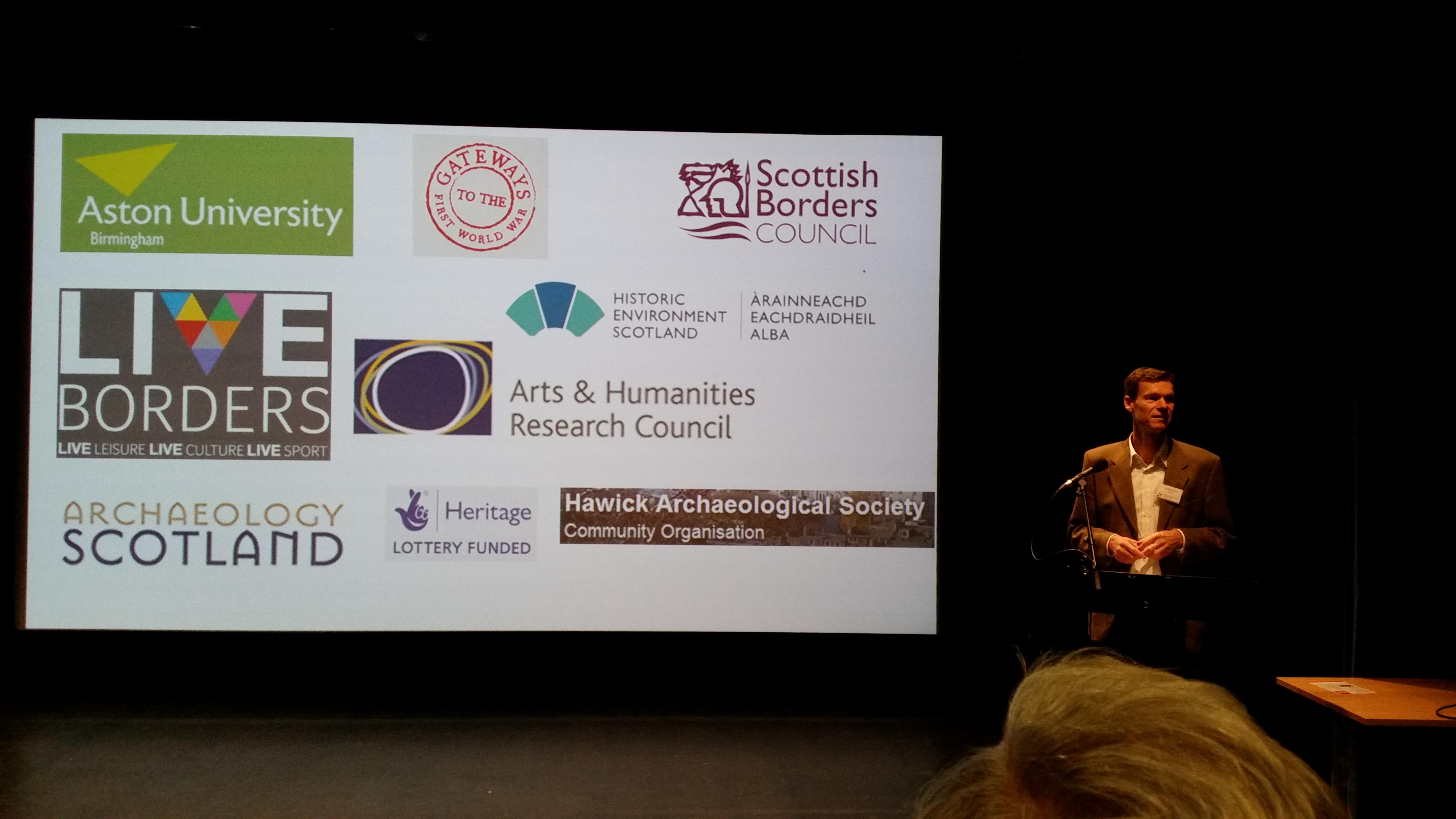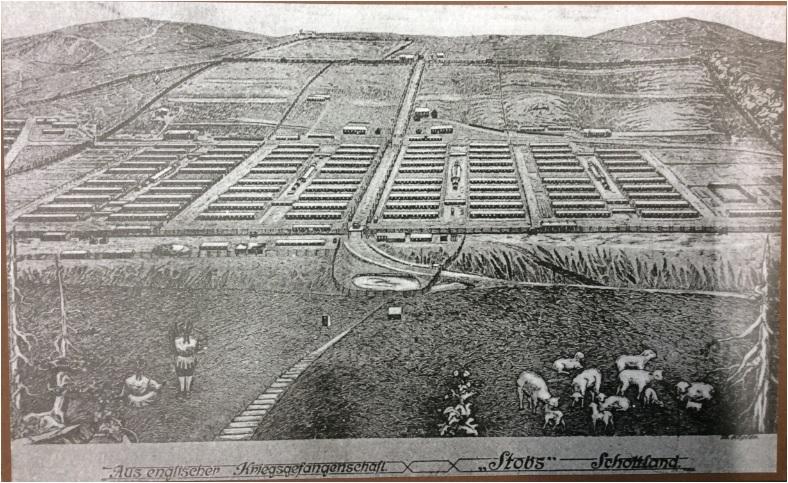
Dr Stefan Manz – picture Stobs Camp Project
Welcome and Introductory Lecture – Stobs in Global Context by Dr Stefan Manz
Dr Stefan Manz is Head of Languages and Translation Studies at Aston University and is currently working on civilian internment in Britain and Britain’s Empire during the First World War.
Dr Manz extended a warm welcome to delegates attending the study weekend and hoped that the event would shed new light on Hawick’s history. He aimed to do this with a number of colleagues from British and Irish universities, archives, libraries, history societies and museums.
The purpose of the event was “to convey … that Stobs is a historical and archaeological site of national, and indeed global, significance.” He added that the study weekend was a platform for interaction and hoped it would contribute towards putting Hawick on the national and international map.
He stressed the importance for providing the national and global context for Stobs Camp as it was only “one mesh in a dense network which covered Britain, it’s empire and also other belligerent powers.” A number of questions could be asked; where does Stobs sit within this global network, what were its connections with other camps and can we identify common themes in all these camps?
During the First World War, Britain had become the centre of global mass internment; there were 91,000 military PoWs and approximately 30,000 civilian internees. But Britain’s operation must be seen in a wider European and global context. Globally there were 9 million PoWs and 450,000 civilian prisoners.

Image of Stobs – courtesy Dr Stefan Manz
By 1914 a camp blueprint had been developed. This included a factor common in many camps; class distinction. Dr Manz also commented that “Generally, camp conditions were relatively good in British-run camps. Food rations were adequate, sanitary conditions were good, medical treatment was available and there was no hard labour.”
Internees kept busy during their time in camp. Dr Manz provided examples of sports, pastimes and artistic creativity. But productivity was not surprising; the internees came from all walks of life and it should not be forgotten that they had a lot of time on their hands. These may also have been a means to combat barbed wire disease (“Stacheldrahtkrankheit”); a depression caused by long periods of isolation and boredom.
Dr Manz concluded his introductory lecture “No other site in Britain is as well preserved as Stobs. Other sites have been virtually erased from the landscape. In Stobs you can still see a hut, barbed wire, hut foundations etc.” Stobs, he added, is an “archaeological treasure chest at your doorstep.”
The Stobs Camp Project would like to express its gratitude to Dr Manz for permitting the use of his words and images.
